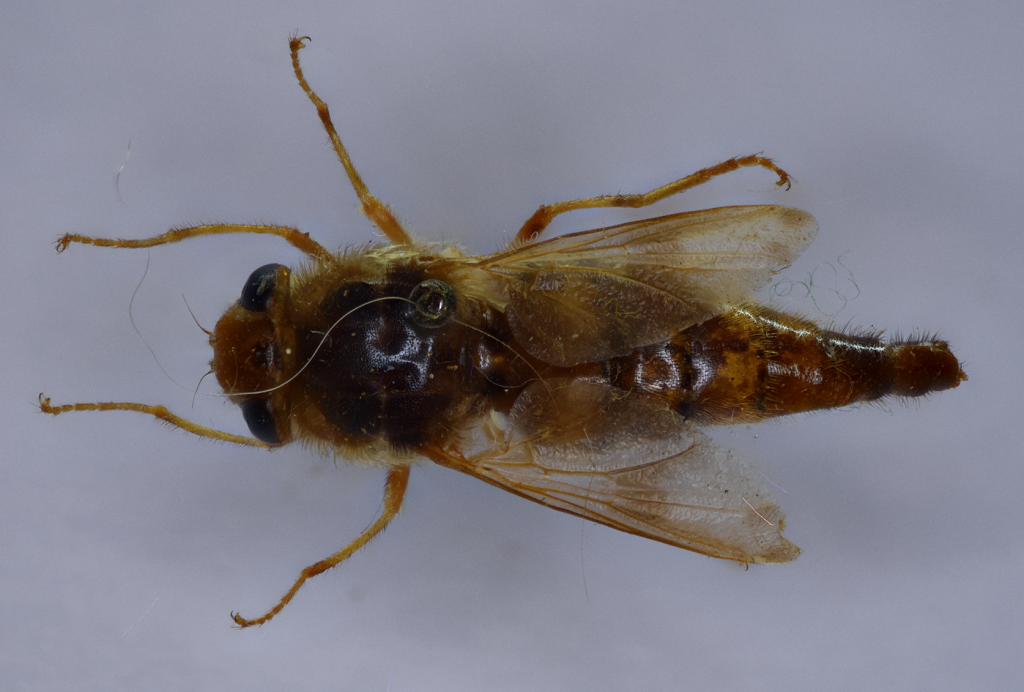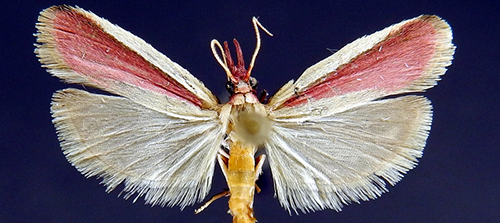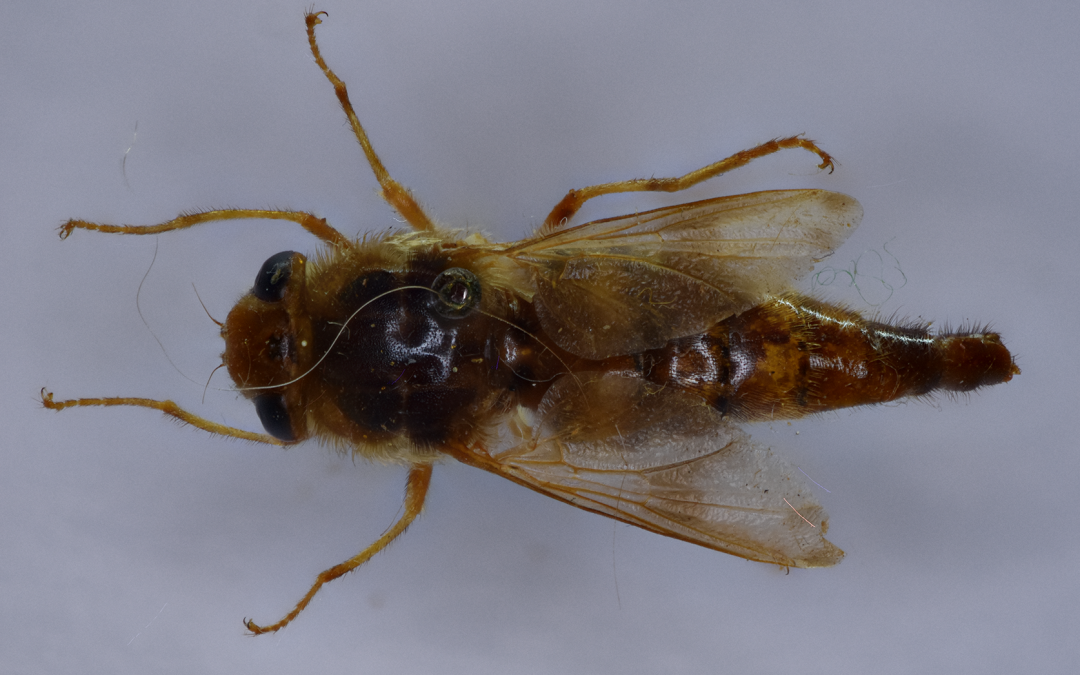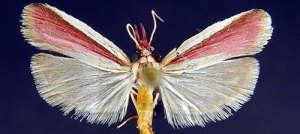Our insect of the week for June 9, 2025 is the horse bot fly – Gasterophilus intestinalis de Geer, 1776 [DIPTERA: Oestridae]. This species is found worldwide. It may be the stuff of nightmares (at least for horses). The specific name intestinalis gives you a clue, doesn’t it?
Adult female flies cement their eggs to the front legs and shoulders of horses, mules, and donkeys. Each female lays up to 1,000 eggs. If the egg is licked by the host animal and ends up in its mouth, it will hatch there. If not licked, the first instar maggot will attempt to migrate to the mouth. The larvae develops in the tissue of the tongue. Yes, you read that correctly. Second instar larvae are swallowed and wind up in the stomach. They remain there for up to 10 months. In spring, third instar larvae pass out of the host (in the feces). Pupation takes place in the soil. Adults are active for only a few weeks in the summer as they lack functional mouthparts.
The specimen in the photographs was collected by our former member, Gordon Adams, in June, 1969 (Peoria Co., IL). The specimen was laying eggs on a horse when collected. This photograph results from stacking over 200 individual photos together.



